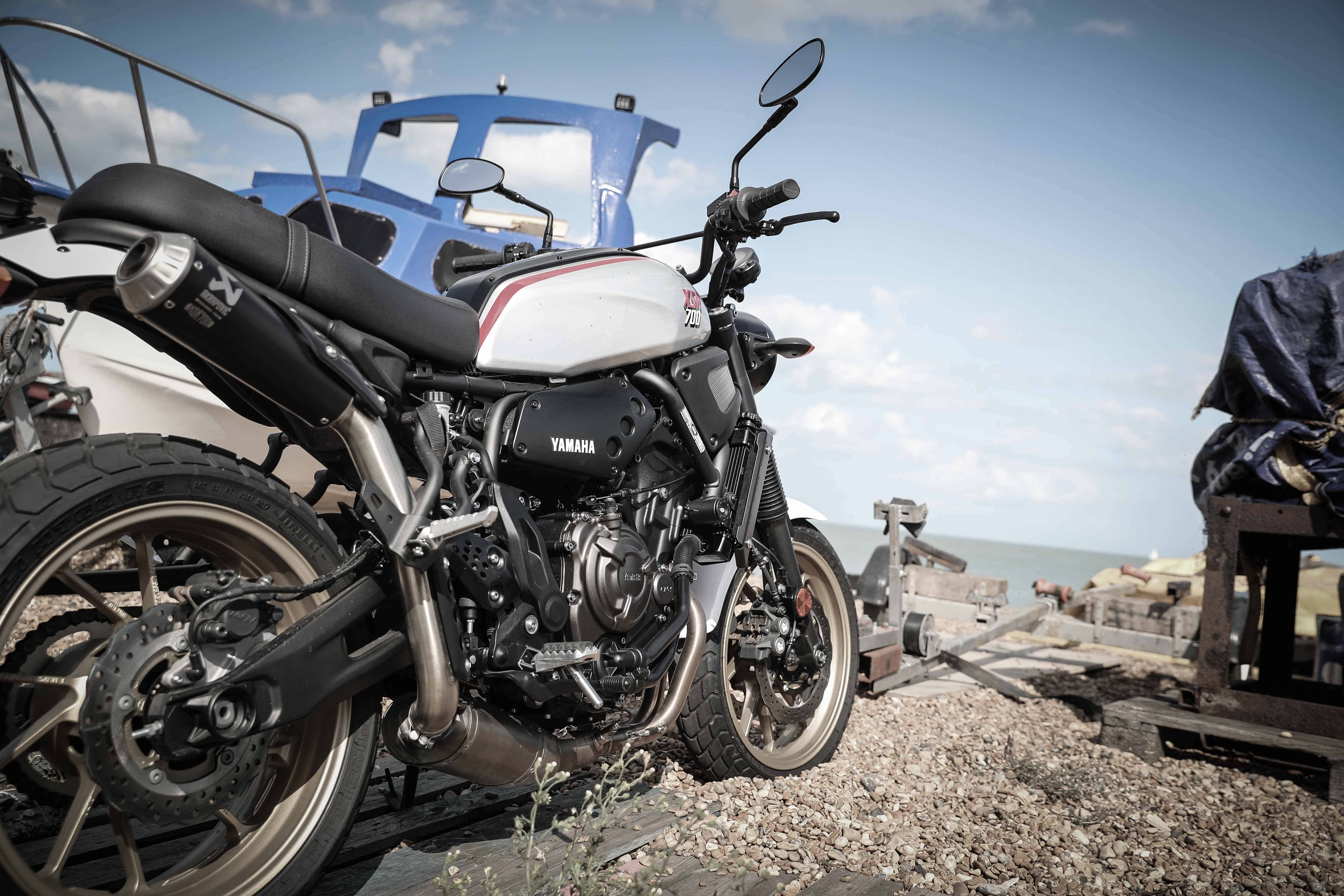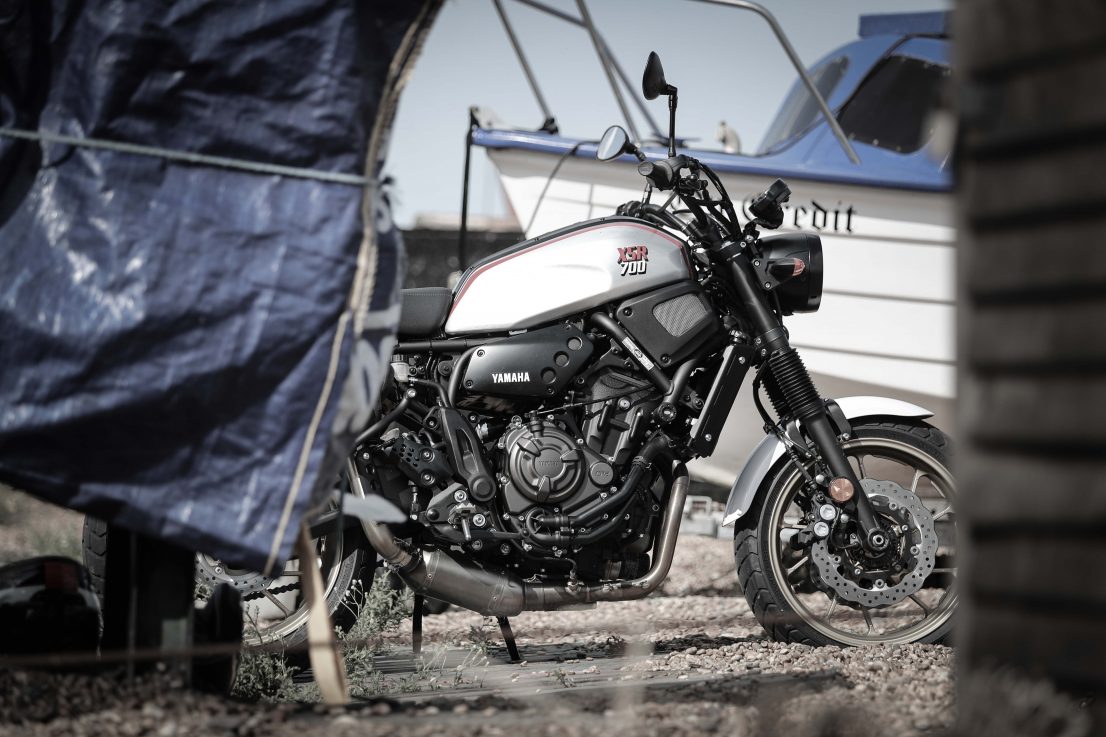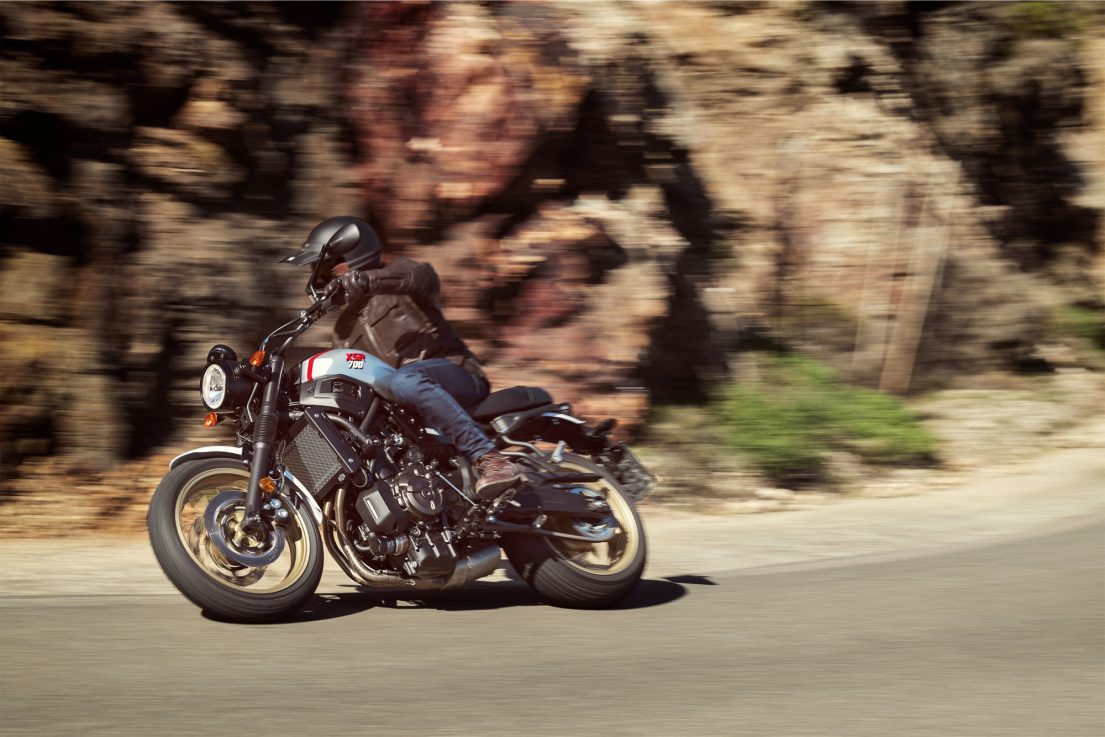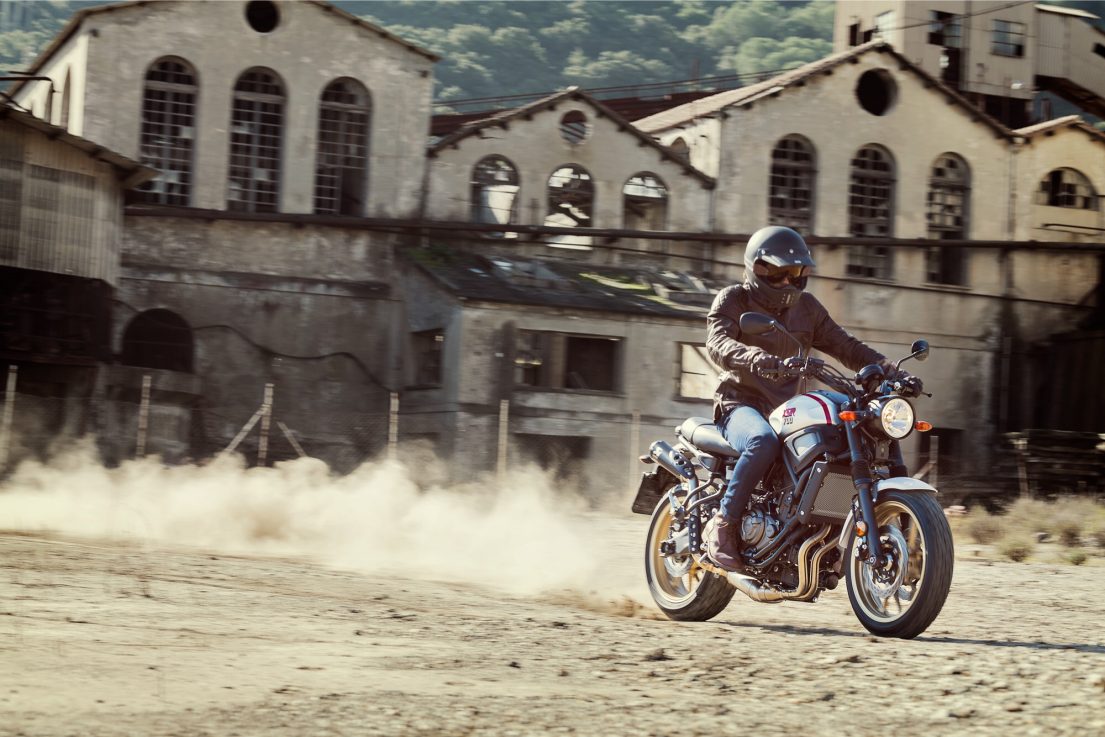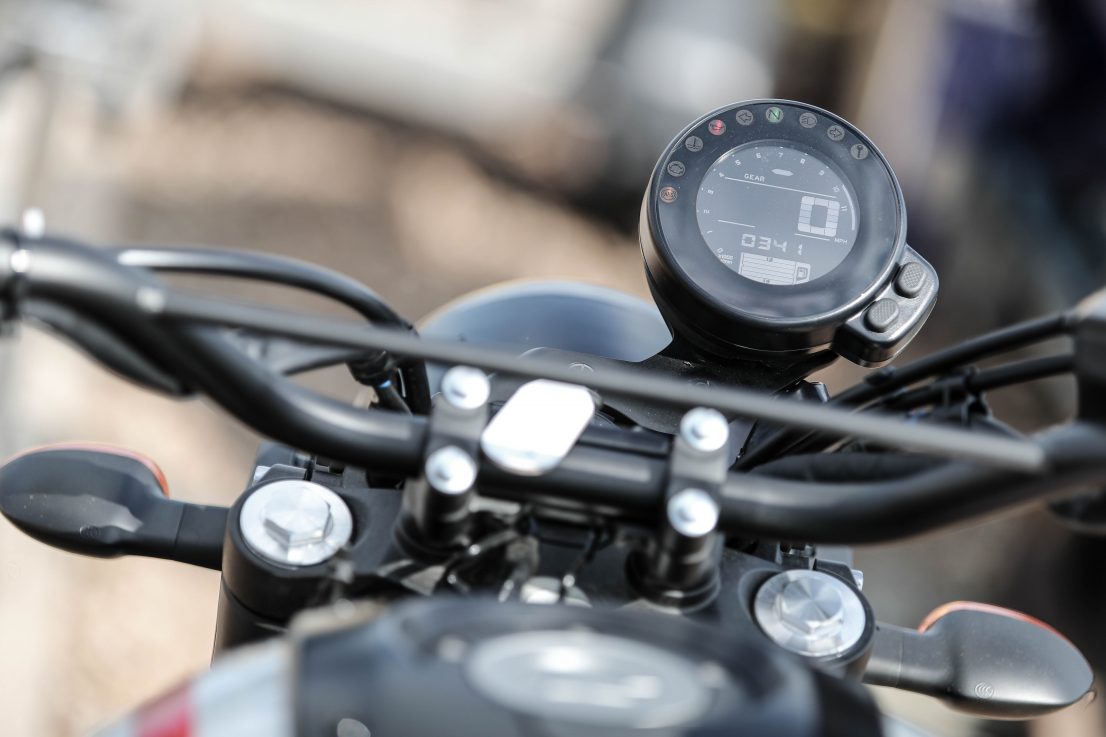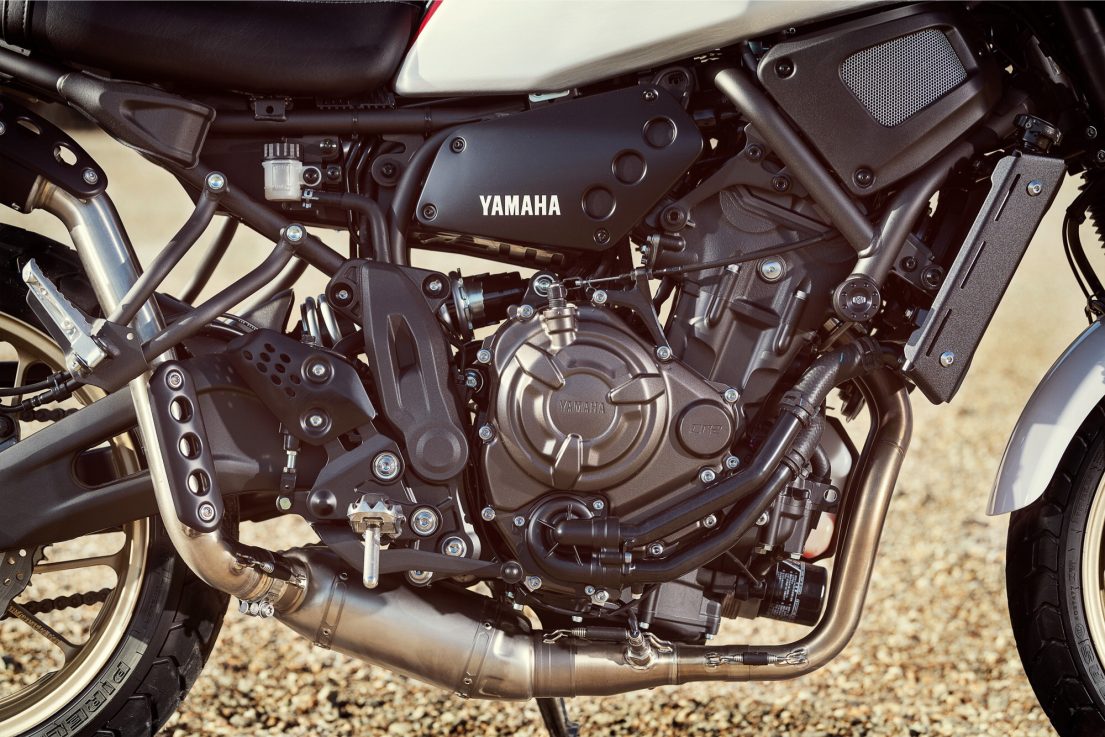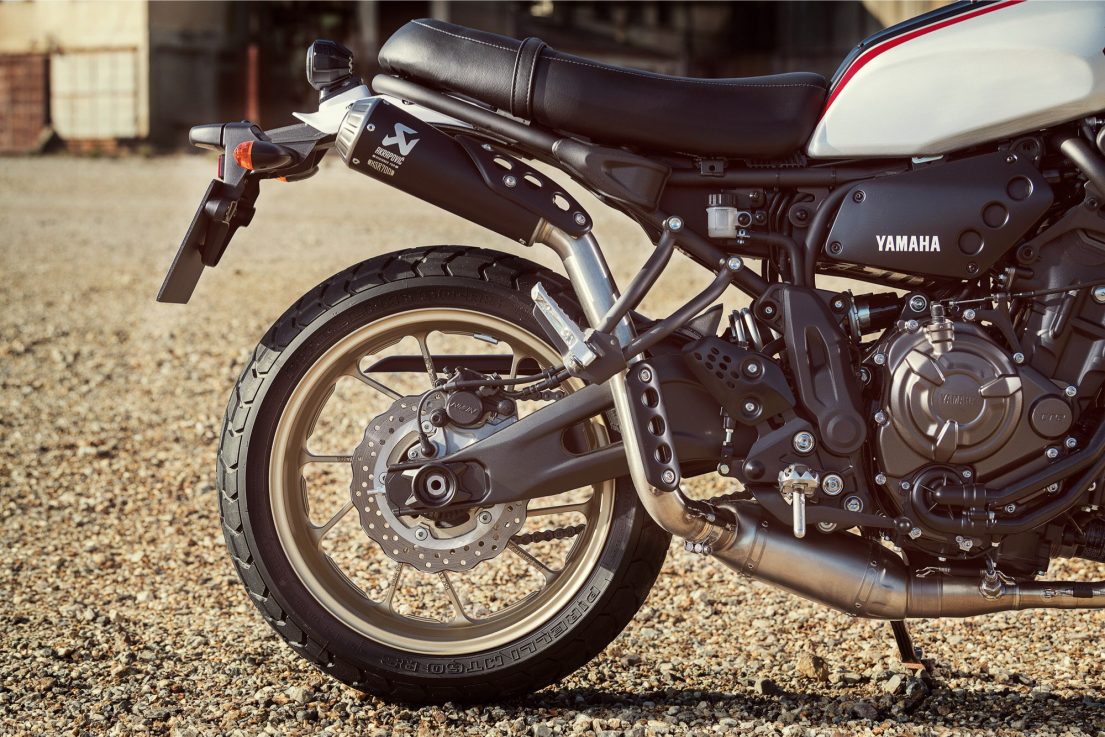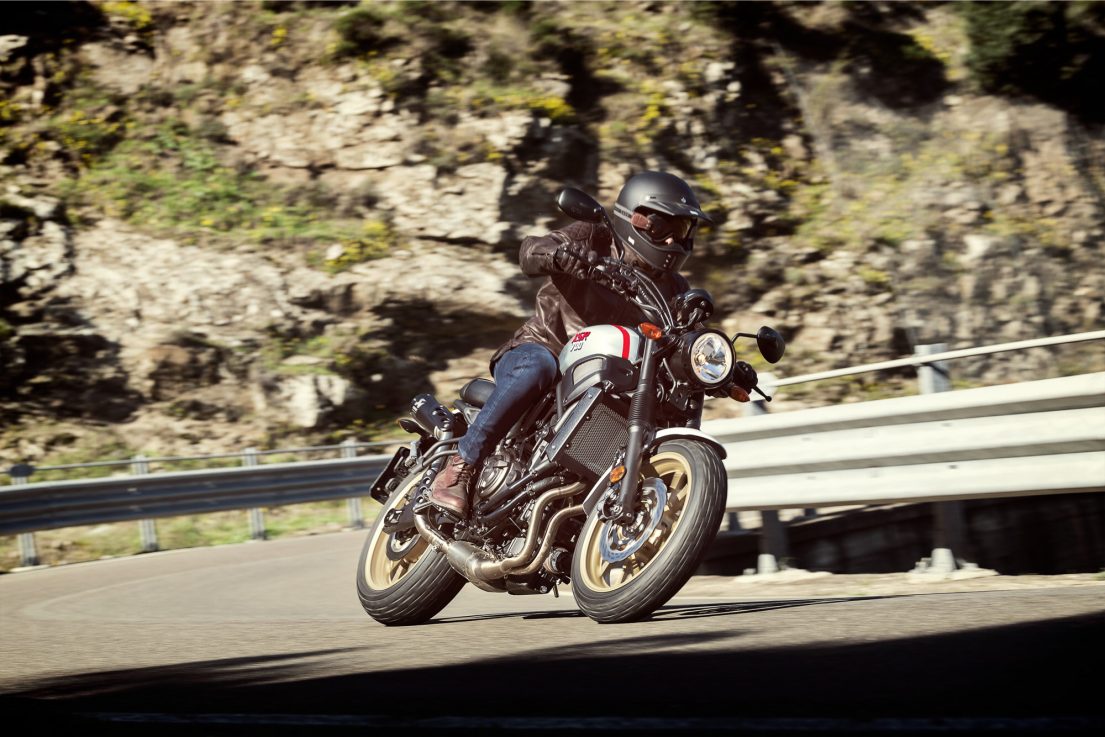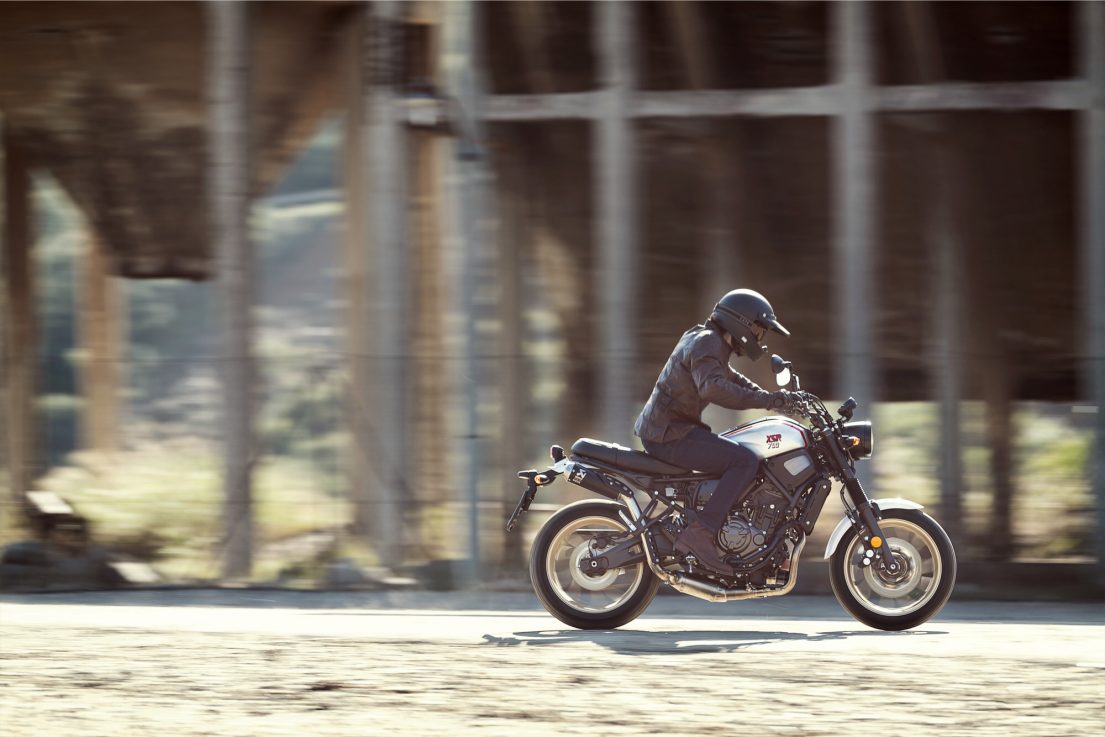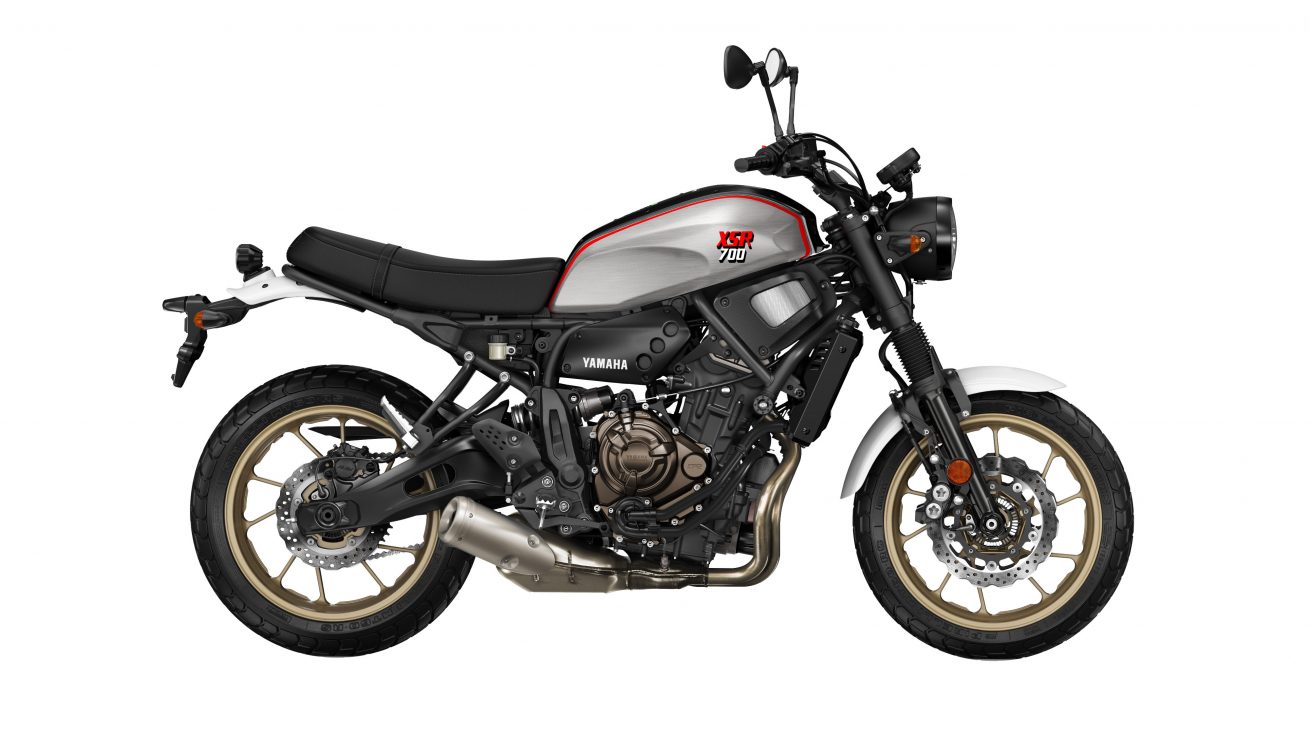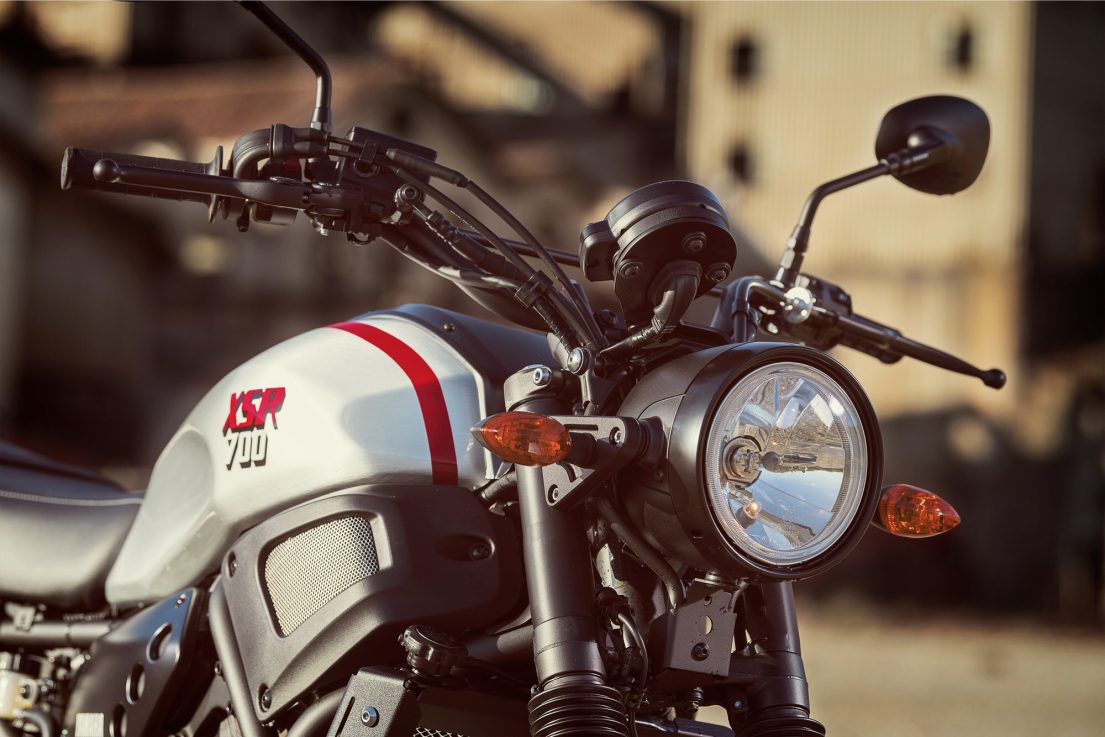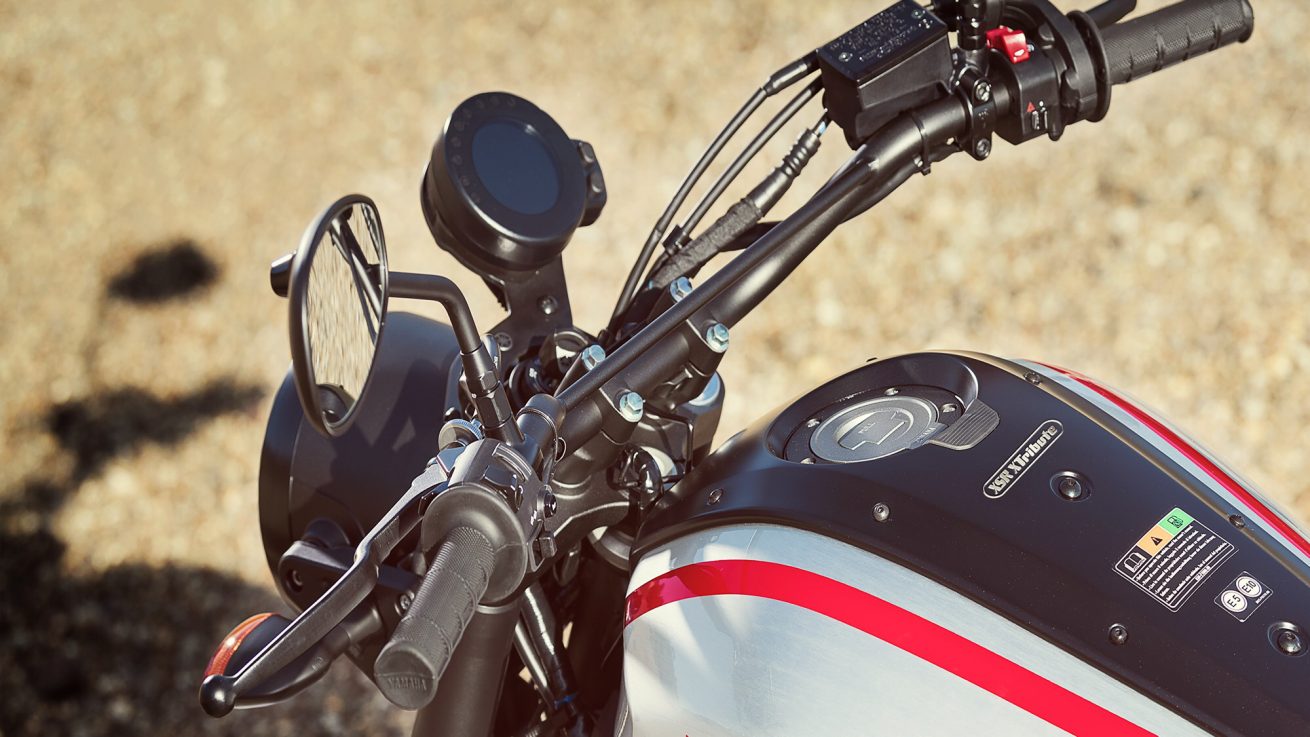That’s an odd name. Until you break it down. ‘XT(t)ribute’ – as in Yamaha’s XT trail bike of the 1970s. And in this case, once you check out the paint scheme it starts to make even more sense, it’s a tribute to a particular XT500, not the 1976 original (painted white base with red/black panels) but the later silver with black and red pinstripes 1981 model (perhaps the boardroom guys preferred it). Underneath the fancy clothing it’s a very close relation to the XSR700 as already exists in the Yamaha sport heritage ‘Faster Sons’ lineup.
Now here at RUST we’ve already visited the Faster Sons line up a couple of times, having ridden the SCR950 and XSR900 (see RUST #33), but we missed the XSR700. To say we left the best until last would be stretching it, but fact is the XSR700, in standard or XTribute variation, is as inspired and characterful as its bigger brothers and very much worthy of closer inspection.
.
THE STORY
The motor we now know better (here at RUST) for its placement in the wonderful Ténéré 700; it’s that parallel twin with a cross-plane crank and fancy firing order (270º followed by 450º) that gives it a characterful vee-twin feel. As in the Ténéré, it’s pumping around 75hp, which makes it potent enough but not crazy fast, a great match for the laid-back but sporty stylings of Faster Sons.
The XTribute variations over the standard XSR700 include wider handlebars (which look suitably like 1970s steel scrambler style), a taller (+30mm) solo-style seat, off-road pegs (as found on the Ténéré), block-pattern tyres (for a chunky look), fork gaiters, plus a lot of black, either in paint, anodizing or plastic. And there’s the option – which our bike had – of an Akrapovic pipe, which is said to match the upsweep of the original XT’s muffler. Well, kind of.
o.
THE RIDE
It didn’t help to be jumping off the Ténéré onto the XTribute, but even so it’s not a big bike and with the sweptback bars, highish footrests and taller seat it’s a rinky-dink seated riding position, where you sit quite upright, with a straight-back, probably the way the hipster dudes like. It’ll still suit smaller types without at all being a small bike. And what I could say at this point is it’s small the way old Brit bikes typically seem smaller than modern bikes – lower in the saddle (although higher than the standard XSR700) and slimmer.
And less technical, like the old bikes, too. There’s no traction control, no rider modes. Just plain old key in the ignition, start and go, like biking used to be. Okay, that’s not true, it used to key in the ignition, fuel cock set to on, choke on, maybe carb tickle, kick start out, turn over to top dead centre, then engage decompressor and gently nudge the piston just past TDC, then a fair prod on the kick starter – and hope to God it fires. Heck, those old kickstart XTs were notoriously temperamental starters. Yes, the good old days…
And the Brit bike comparison – which is tenuous, I admit – does at least continue with the exhaust note from the Akrapovic exhaust. It makes a very similar rumble and low bark the way old Dominators and Bonnevilles twins from the 1960s did. It’s not overly loud but it has an edge, accentuating the almost-punchy performance and if the bark isn’t enough it occasionally spits and cracks on over-run. Which is nice…
It is though, at heart, a gentle ride. As with the Ténéré, that motor is just sublime, being perfectly balanced (and perfectly fuelled) creating a most laid-back ambiance; you can ride this bike – as I did – quietly through the countryside enjoying just the quietest most agreeable amble.
It can boogie, of course, and it’s very manageable on those fat-tyred 17” hoops – which feel like skateboard wheels after riding around so much on 21”, 19” and 18” skinny adventure rubber. The suspension holds up just about – I wasn’t riding stupid-fast – but for real back lane scratchers Yamaha has Öhlins upgrades of various grades available for the forks and shock. The brakes are easily up to the job, and while they look very much like the eye-popping ‘blue spot’ Sumitomo brakes you’d find on hyper sports R1s two decades ago, in their current application they’re quite progressive in application and of course linked to ABS.
Riding solo the XTribute was a cool ride, undemanding, unimposing and thoroughly enjoyable. That is up to the point where the saddle became uncomfortable. Which, like the Ténéré, is somewhere in the 30-40 minute mark. Riding two-up was not so cool, either. Even with the smallest passenger it’s a fight over saddle real estate, which the pillion invariably loses. And, dare I add, the pain threshold is shortened even more with two on the bike. Which is a crying shame as the ride is otherwise a joy.
The XTribute comes to market at a near £900 premium over the XSR700 and I’m not really sure how much I’d rock with that. The standard XSR already has 95% of the XTribute’s content and styling, it’s just the details, like the gold wheels and black bars and flat seat that make up the difference. And as much as I like the sound of the Akrapovic, I’m not a big fan of the styling of it – and my boot heel rubbed it – whereas the standard stubby pipe I think leaves the XSR with cleaner lines.
AND IT FITS WHERE…?
This is though a game of horses for courses, and when it comes to this 700cc twin-cylinder road bike market, Yamaha has every course covered. The same motor is found in their £6349 MT-07 Hyper Naked, which is a class bestseller. Then you have the Sports Tourer Tracer 700 which may well keep your pillion in more comfort (at £7399), while the Sports Heritage market is met with the XSR700 at £7099 and more detailed XTribute at £7945 – while our natural love here at RUST is the Ténéré 700 at £8699.
But for guys and gals who’d like a Sunday ride that has style and fun delivered in equal ample amounts this scrambler inspired XTribute is an odds-on favourite. I’d just leave a few quid to one side for a comfort seat…
SPECIFICATION
Yamaha XTribute
Engine: liquid cooled DOHC four-valve twin cylinder four-stroke
Displacement: 689cc
Bore & stroke: 80 x 68.6mm
Max Power: 55kW (74bhp) @ 9000rpm
Max Torque: 68Nm @ 6500rpm
Fueling: EFI
Starter: Electric
Transmission: Six-speed gearbox, wet multi-plate clutch
Frame: diamond, steel tube
Front suspension: telescopic forks, non-adjustable, 130mm travel
Rear suspension: adjustable monoshock, 130mm travel
Wheels / Tyres: 120/70-17”, 180/55-17” – Pirelli MT60RS
Brakes: Two front discs 282mm four-piston calipers, Rear disc 245mm single piston caliper; ABS
Seat height: 845mm
Wheelbase: 1405mm
Ground clearance: 140mm
Weight: 188kg (dry)
Fuel capacity: 14 litres
Contact: www.yamaha-motor.com
Price: UK £7945, EU €8799 US $8499 (XSR700)



